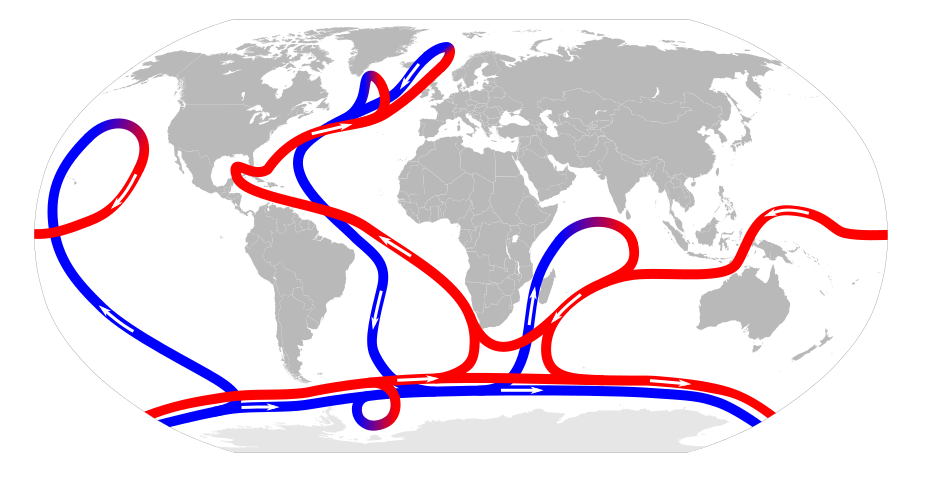Li, Q., England, M. H., Hogg, A. M., Rintoul, S. R., & Morrison, A. K. (2023). Abyssal ocean overturning slowdown and warming driven by Antarctic meltwater. Nature, 615(7954), 841-847. https://doi.org/10.1038/s41586-023-05762-w
Earth’s oceans are connected by the “ocean conveyor belt”—also known by the more science-y phrase “meridional overturning circulation”. This just means that water moves around between the different ocean basins, transporting heat and nutrients as it goes. This circulation also moves water from the surface to the deep ocean, a process with major effects on Earth’s climate. Heat and carbon from the atmosphere can be absorbed by surface waters, sink to the deep ocean, and stay there for hundreds of years—effectively cooling the surface of the planet.

The Southern Ocean, which surrounds Antarctica, is the source of most of the world’s deep, cold water. Cold, salty water formed near Antarctica—called Antarctic Bottom Water—is so dense that it quickly sinks and spreads out, eventually flowing north and reaching the entire global ocean. And, because Antarctica is very cold, the Southern Ocean absorbs more of the heat trapped by greenhouse gases than any other part of the ocean. However, as Antarctica warms and polar ice caps melt due to climate change, this conveyor belt might change. How will warming at the poles affect ocean circulation?
Ice melt is having big effects on the Southern Ocean
Scientists have known for a few years now that Antarctic Bottom Water is warming, but they didn’t fully know why. Recently, a group of researchers tested whether this warming was caused by melting ice sheets. Since it’s so hard to study the deep ocean directly (and it’s hard to get to Antarctica in the first place!), the researchers used mathematical climate models to estimate the effects of ice melt and predict future changes.
The researchers found that ice melt reduces that amount of bottom water that forms, thus warming the deep ocean and reducing circulation. By including projected future changes in the model, they found that this trend will probably continue, causing the deep ocean to warm all over the Earth and reducing the strength of the Earth’s conveyor belt.

Is the conveyor belt going to stop?
Reduced ocean circulation is definitely bad news for everybody. It means that less heat from the atmosphere can move into the deep ocean, and the surface of the planet will be warmer. In the Northern Hemisphere, the conveyor belt actually warms the North Atlantic, and if it were to stop completely, North America and Europe would get a lot colder—this is even the plot of The Day After Tomorrow! You may see pop science articles with headlines like “A critical ocean system may be heading for collapse” or “What happens if the ocean’s currents stop?”. While there is real cause for concern, we also need to keep in mind that this is not a Hollywood apocalypse movie.
For one thing, the scientists in this study used a kind of worst-case scenario. We still have time to reduce emissions and lessen these changes. It’s super important for scientists to continue to study these complex processes, so that we can understand the changes that might happen and what we need to do in order to prevent or manage those changes. And the most important thing is that governments and corporations cut their emissions as soon as possible, so we keep Earth’s systems running as well as possible.
Cover image source: Tanya Patrick, via Wikimedia Commons

I am a PhD student at MIT and the Woods Hole Oceanographic Institution, where I study the evolution and physiology of marine invertebrates. I usually work with zooplankton and sea anemones, and I am especially interested in circadian rhythms of these animals. Outside work, I love to play trumpet, listen to music, and watch hockey.

